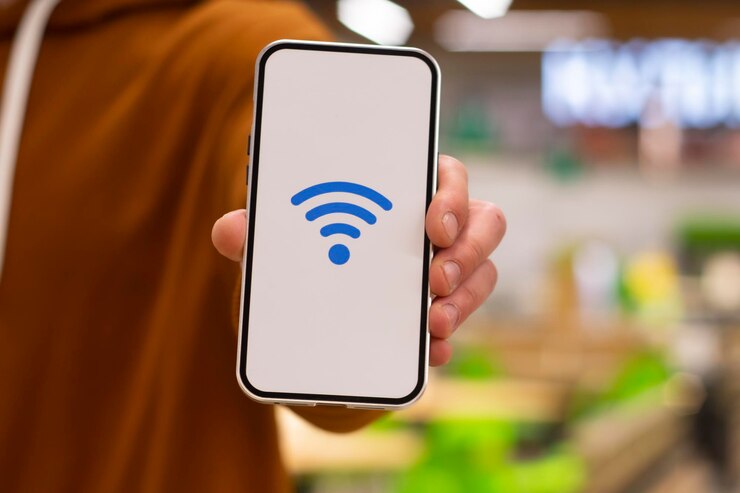
Direct mail has been a tried-and-true marketing strategy for decades. Still, as technology continues to advance, there are new and exciting ways to enhance the effectiveness of your direct mail campaigns.
Integrating emerging technology into direct mail can increase engagement and response rates through methods of leaflet delivery but also provide valuable insights into your audience’s preferences and behaviors.
In this article, we will explore various ways to harness the power of emerging technology to revamp your direct mail campaigns.
1. Augmented Reality (AR) Experiences:
Augmented reality is a powerful tool that can turn a static direct mail piece into an interactive experience. It overlaps digital content in the real world when viewed through a smartphone or tablet.
For example, a fashion retailer could send a mailer with an AR code that allows customers to try on clothes or accessories before making a purchase.
Implementing AR in your direct mail campaign may require collaborating with a creative agency or AR specialist, but the engagement and excitement it generates can be well worth the investment.
Augmented reality can bring a whole new dimension to your direct mail campaigns. Consider collaborating with AR app developers or agencies specializing in creating AR experiences.
2. Personalized QR Codes:
Modern QR codes have evolved beyond basic information storage. They can now be dynamic and personalized. When recipients scan the code, they can be directed to a landing page tailored to their previous interactions with your brand.
By leveraging customer data, you can display products or services that match their preferences and behaviors, significantly increasing the chances of conversion.
To create personalized QR codes, you must integrate with customer relationship management (CRM) software that tracks individual customer behavior and preferences. This could involve:
A personalized QR code on a direct mail coupon that directs customers to a unique landing page with discounts on their favorite products.
It sends out personalized QR code gift cards with a balance reflecting the recipient’s past spending habits.
3. Near-Field Communication (NFC) Technology:

NFC technology allows for a seamless and immediate connection between your mail piece and the recipient’s smartphone. Unlike QR codes, there’s no need to scan; just a simple tap is enough.
Restaurants, for example, can embed NFC chips in their mailers to allow patrons to tap and instantly access the menu, make reservations, or place orders for takeout. The ease and convenience of NFC can enhance the customer experience and drive engagement.
NFC technology can be a great way to simplify customer interactions. Here’s how you can use it effectively:
Retailers can integrate NFC chips into loyalty cards, enabling customers to tap their cards to earn rewards or apply discounts.
Automotive dealerships can incorporate NFC technology in their mailers to allow potential customers to schedule a test drive or receive a personalized quote.
Related: The Best Email Marketing Software For Shopify Stores
4. Video Brochures:
Video brochures can be a game-changer in direct mail marketing. These brochures contain a small LCD screen with a video message upon opening. It’s like having a mini-commercial inside your mailer.
This can be particularly effective for product launches, explaining complex concepts, or showcasing customer testimonials. Video brochures can be produced in various formats, from small pamphlets to full-sized, magazine-style booklets.
Video brochures are eye-catching and can effectively showcase your products or services.
Some tips for using video brochures include:
- Creating compelling and professionally produced videos that tell a story or highlight the features of your products.
- Including a call to action in the video, such as a discount code or a link to a landing page for making a purchase.
5. Data-Driven Personalization:
Data is the cornerstone of personalization. You can tailor your direct mail campaigns to individual preferences, purchase history, and demographics by leveraging customer data.
Segmentation is key here, allowing you to craft messages that resonate with specific target groups. Data-driven personalization goes beyond just including a recipient’s name; it involves tailoring the entire message and offering to maximize relevance and impact.
You must gather and analyze customer data meticulously to achieve effective data-driven personalization.
You can –
- Use purchase history to recommend complementary products or upgrades.
- Segment your mailing list based on demographics, location, or previous interactions to send tailored messages and offers.
- Implement A/B testing to fine-tune your messages and offers.
6. Chatbots and AI Integration:

Direct mail doesn’t have to be a one-way conversation. Integrating chatbots into your campaigns adds a conversational element that can drive engagement.
When recipients scan a QR code or visit a URL, they can interact with a chatbot that answers questions, provides recommendations, or even guides them through a purchase. The beauty of this technology is that it can be available 24/7, providing instant support and information.
Integrating chatbots and AI into your direct mail campaign can add a dynamic element.
Consider –
- Creating chatbots that guide customers through buying, answer FAQs, and provide product information.
- Using AI algorithms to analyze customer responses to the chatbot and adjust the conversation or recommend personalized products accordingly.
7. Trackable Mailers:
Knowing when your mailers are delivered and opened is invaluable. Trackable mailers use unique codes or markers that allow you to monitor recipient engagement in real time.
This data can help you adjust your campaign strategies, optimize delivery times, and improve overall campaign effectiveness. It also provides valuable insights into which aspects of your campaign are working and which may need adjustment.
In summary, the success of integrating emerging technology into direct mail campaigns lies in the meticulous planning and execution of these strategies.
Each approach should be carefully tailored to your target audience and aligned with your marketing objectives.
Additionally, remember to measure the results of your campaigns, analyze the data, and make adjustments to improve your direct mail efforts continually.
Conclusion
Integrating emerging technology into direct mail campaigns can transform a traditional marketing method into a dynamic and engaging experience.
Whether you opt for AR, personalized QR codes, NFC technology, video brochures, data-driven personalization, chatbots, or trackable mailers, keeping your audience’s preferences and behaviors at the forefront of your strategy is essential.
When done correctly, these innovations can boost response rates and provide you with invaluable data for continuous improvement in your marketing efforts.
Read Also:






